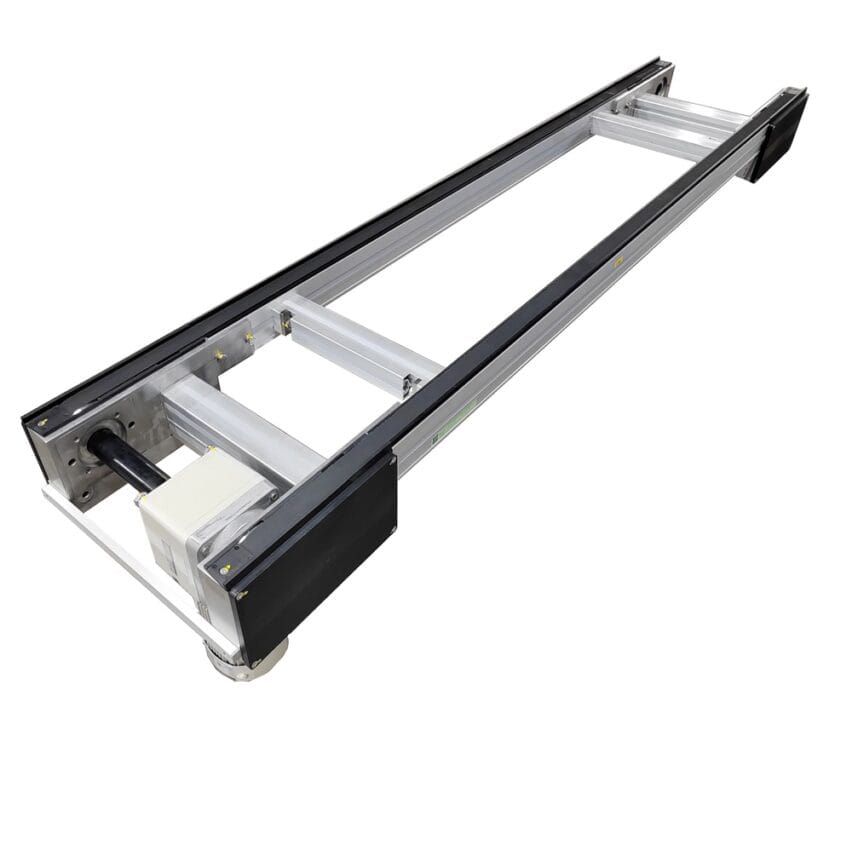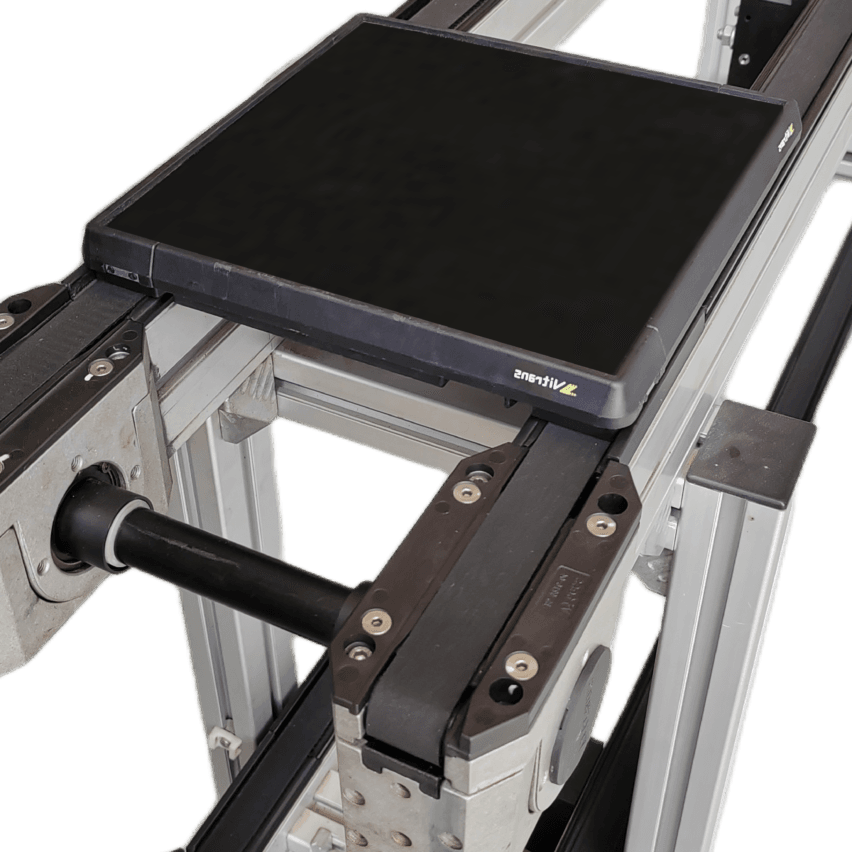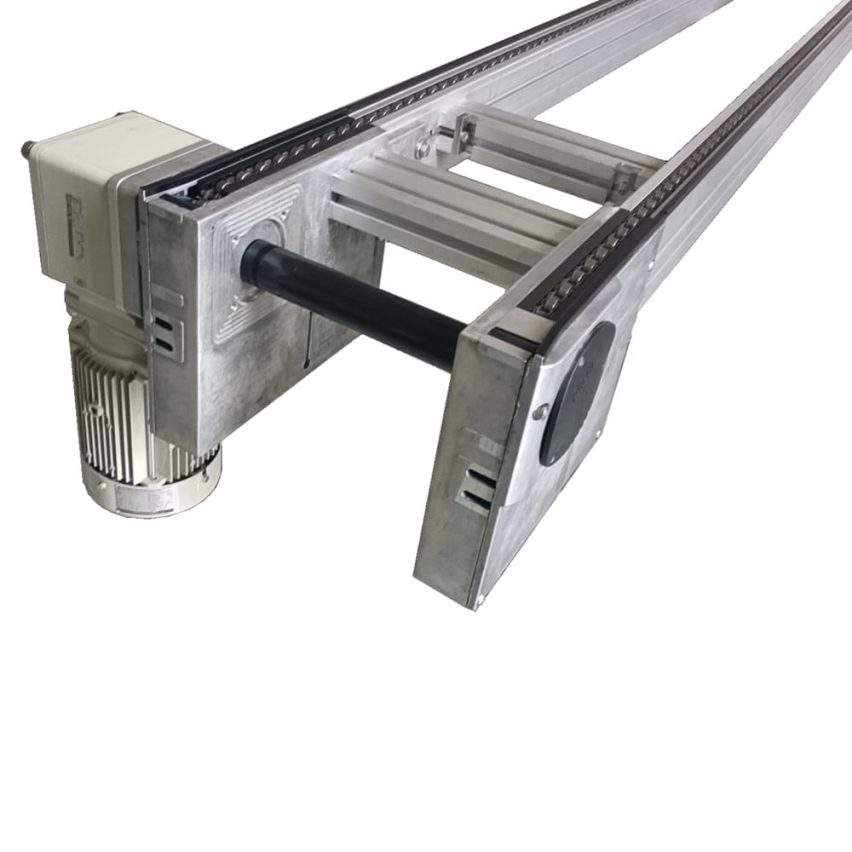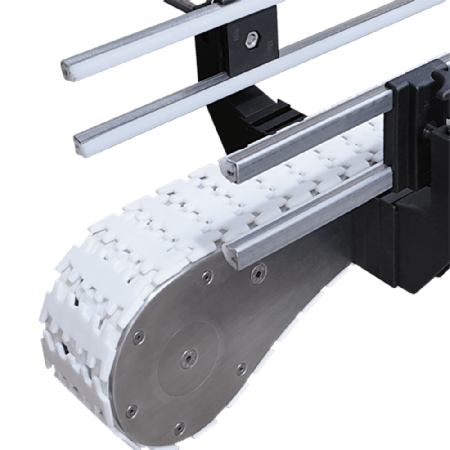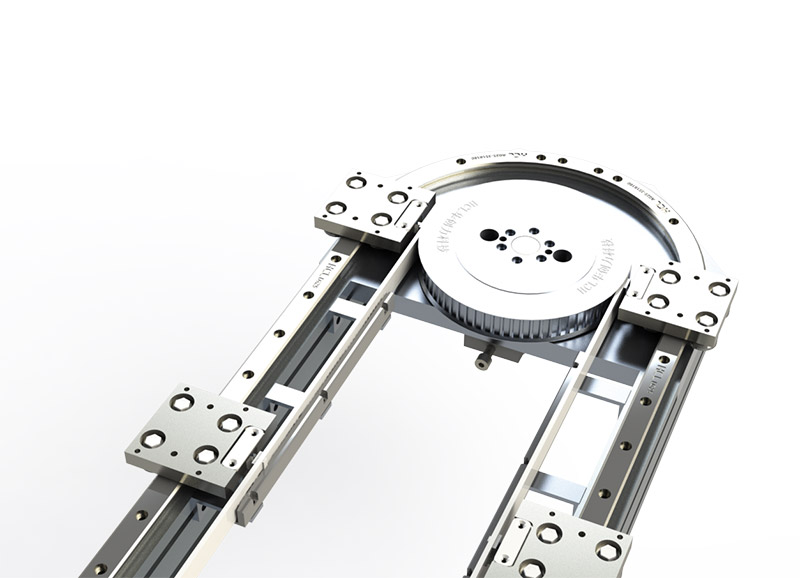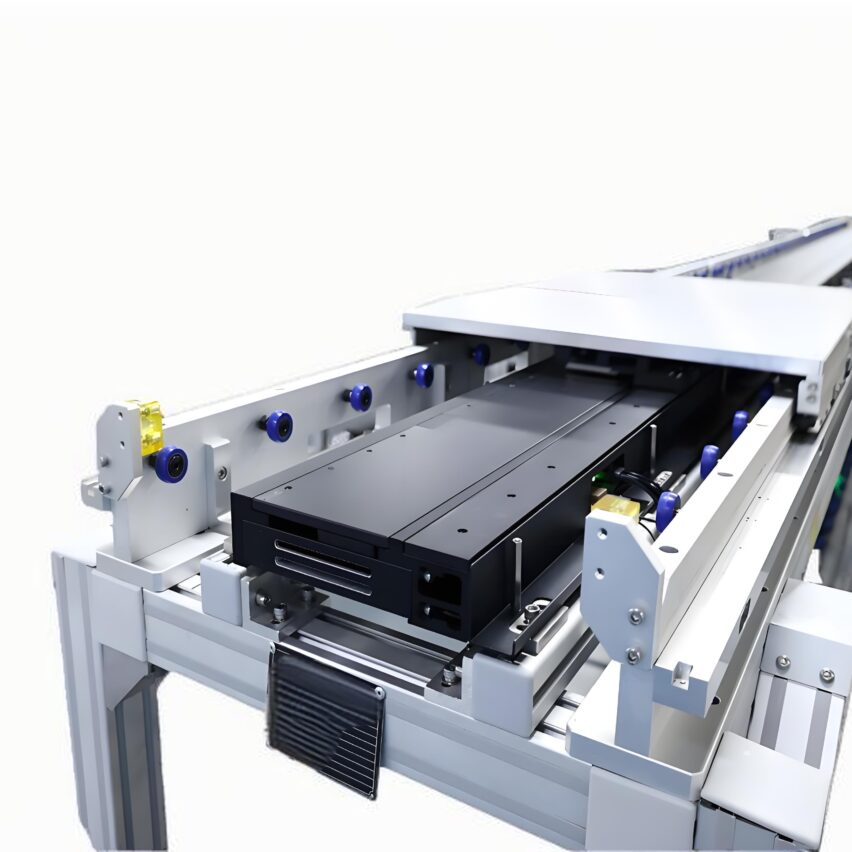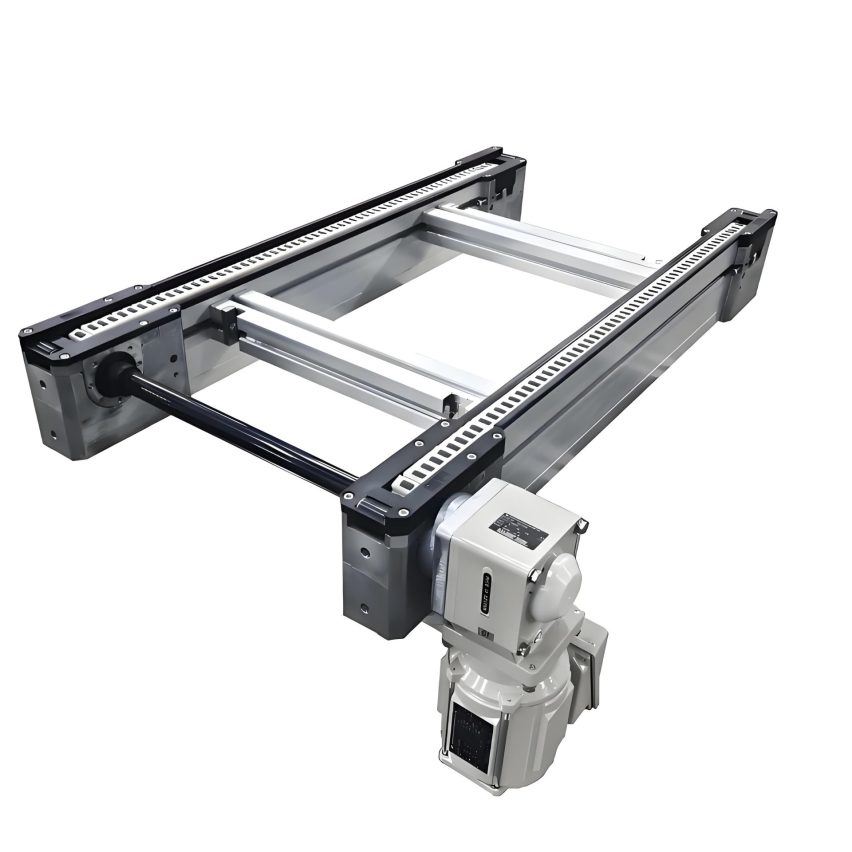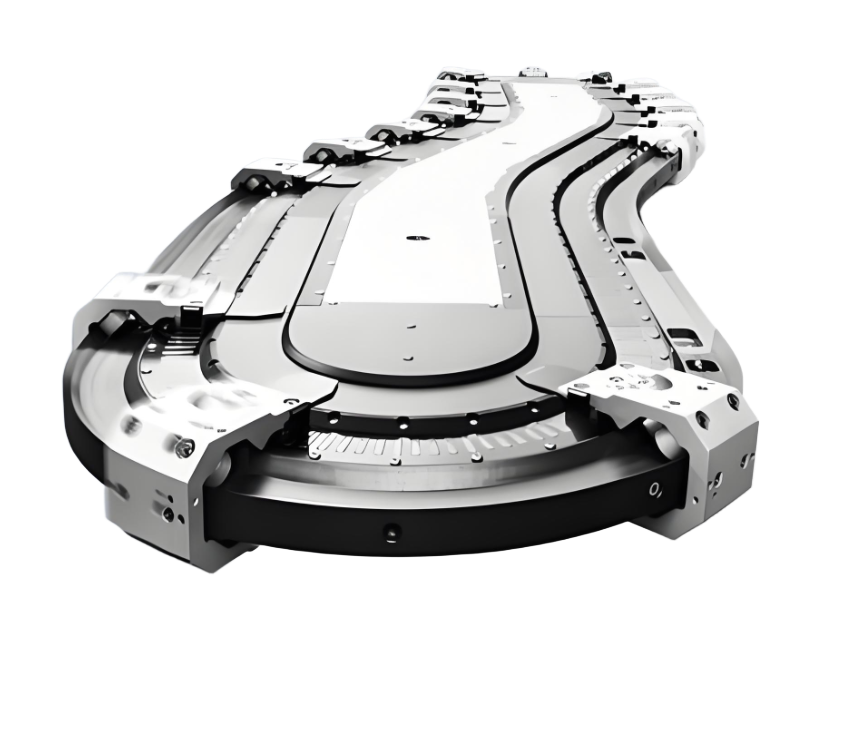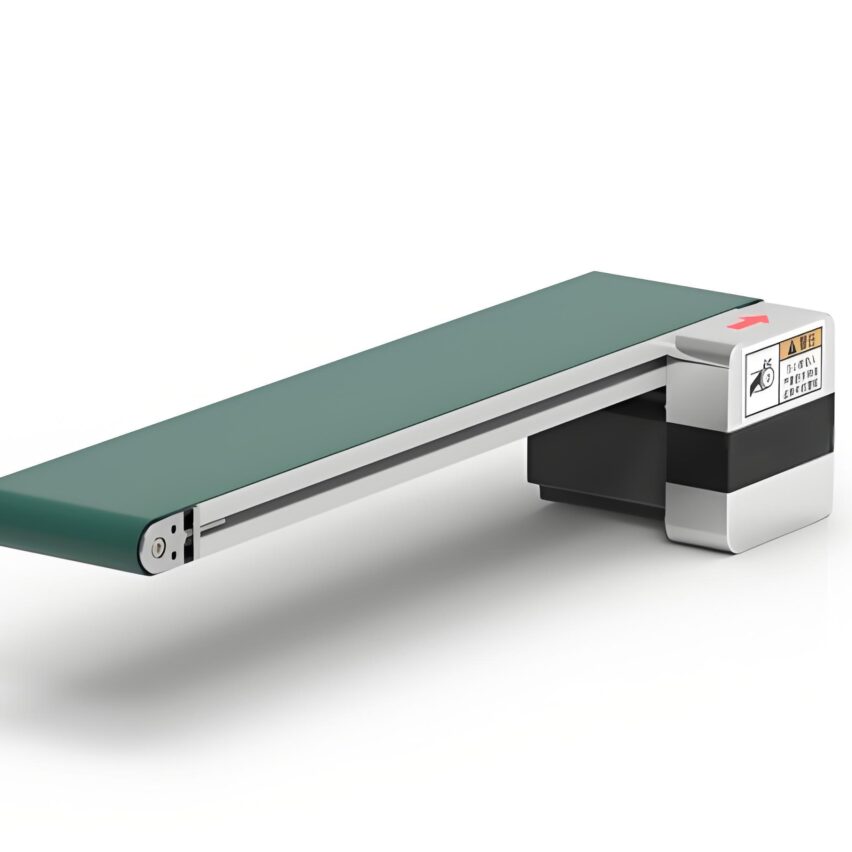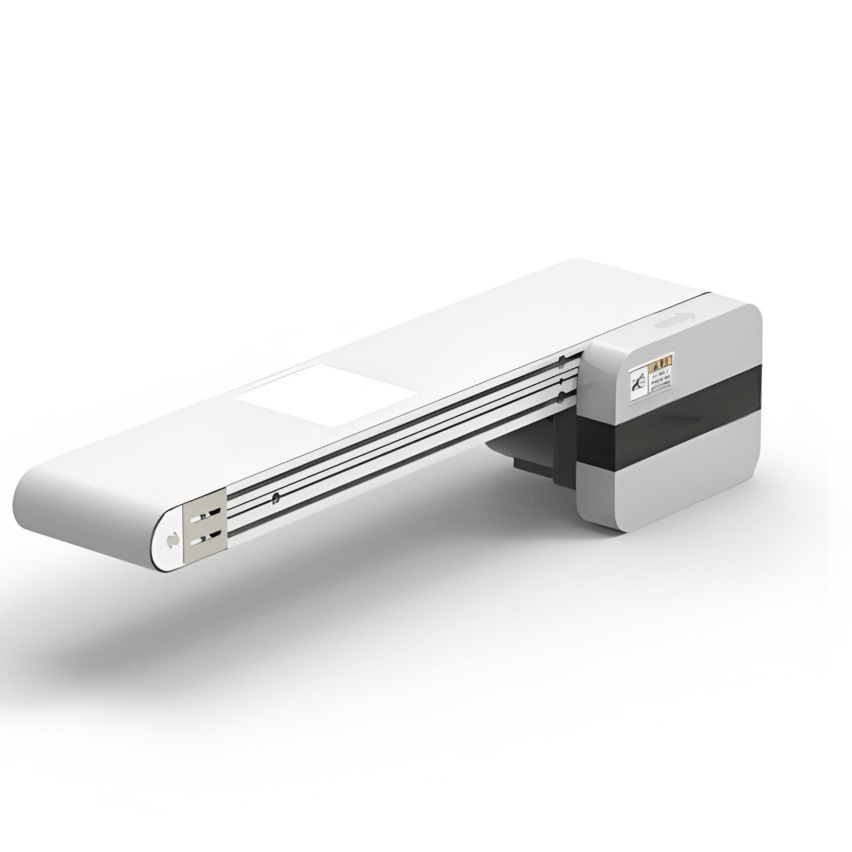One.Core Technology Principle: Engineering Revolution in Differential Transmission and Space Folding
The heart of the heavy-duty double-deck speed chain lies in the differential mechanism of "low-speed chain driving high-speed loads".. When the chain runs at a speed of 2-20 m/min, the workpiece plate produces a speed superposition effect due to the difference in diameters between the roller (diameter D) and the roller (diameter d), and the actual speed of the workpiece plate can be up to 2.5-3 times that of the chain, and its motion formula is:
Vtooling board
= Vsprockets
× (1 + D/d)
This design efficiently converts mechanical energy into conveyed kinetic energy by levering the incremental pivot point.
Space Folding StructureBreaking away from traditional limitations:
- vertical circulation systemThe upper level conveys heavy workpieces (e.g. engine blocks) and the lower level circulates unloaded pallets, saving 40% of floor space compared to a single-level system, which is suitable for high-density plant layouts;
- Intelligent Return Mechanism: Ejector cylinders work in tandem with linear guides to achieve cross-floor flow of tooling boards and a reduction in failure points by 30%.
personal viewpoint: This design is in factPeak Application of Mechanical Topology--Through differential physics and vertical multiplexing, "double compounding of kinetic energy and space" can be achieved in a limited space, which is especially suitable for the large-scale production needs of heavy industry.
Two.Structural innovation: engineering philosophy for heavy-duty optimisation
1. Modular architecture for overloading
- High strength alloy steel chainThe chain plate is specially heat-treated to increase the tensile strength by 50%, and the single line load limit is up to 2000kg, which covers the scenario of conveying 90% heavy-duty parts;
- tiered load-bearing design: Upper carbon steel rollers to carry heavy loads (limit 300kg/m²) and lower engineering plastic rollers to achieve a lightweight return to the plate, reducing energy consumption by 25%.
2. Integration of stability and intelligence
- Dual anti-offset system: High-precision casting sprocket with closed guide rail, dynamic positioning error is controlled within ±0.3mm to ensure accurate docking of heavy workpieces;
- Predictive maintenance network: Tension sensor + PLC real-time monitoring of chain link fatigue, 14 days advance warning of the risk of breakage, unexpected downtime reduction of 60%.
typical caseAfter adopted by a construction machinery plant in Changzhou, the assembly efficiency of heavy-duty gearboxes was improved by 1,20%, and the annual maintenance cost dropped by 45%.
Three.Performance parameters: the gold standard for heavy industrial scenarios
| norm | Heavy Duty Double Speed Chain | Conventional Heavy Duty Conveyor Lines |
|---|---|---|
| Maximum load | 2000 kg/line | 800 kg/line |
| Conveying speed | 50 m/min (servo drive) | 15 m/min |
| Space utilisation | Vertical multiplexing, saving 40% | Additional return channel required |
| Dynamic accuracy | ±0.3mm (laser positioning) | ±1.5mm |
| life cycle | 100,000 hours (dust-free environment) | 50,000 hours |
Exclusive dataThe actual measurement of heavy industry head enterprises shows that the ROI of heavy-duty double-layer chain reaches 2,50% in the production line with a capacity of >5t/d, which is 60% higher than that of the single-layer system.
Four.Application Scenario: Efficiency Multiplier for Heavy Industry
1. Manufacture of automobiles and heavy machinery
- Engine assembly lineWorkpiece plate conveying cylinder at high speed of 50m/min, ±0.3mm stopping accuracy to match the robot tightening process;
- Transmission subassembly line: The double-layer structure supports mixed-flow production of multiple models and reduces the changeover time to 30 minutes.
2. Heavy logistics and energy equipment
- Wind turbine blade transhipment: Carbon steel roller chain carries 3 tonnes of blades and is resistant to extreme cold environments of -30°C;
- Pressure vessel welding line: Stainless steel chains are resistant to weld slag spatter, increasing life by 3 times.
Industry Insight: When the weight of a single piece is >500kg, the "marginal carrying cost" of a heavy-duty chain is only 1/3 of that of a conventional roller line -In heavy-duty scenarios, structural strength is more economically valuable than conveyor speed.
Five.Technology Evolution: A Picture of the Future for Intelligent Heavy Duty
1. Digital twins and adaptive control
- Dynamic load balancing: AI algorithm distributes workpiece weight in real time, avoiding local overload and extending chain life by 40%;
- RFID whole process traceability: Chip embedded in tooling boards, linked to the MES system to optimise the scheduling of heavy parts.
2. Materials science and sustainability breakthroughs
- Composite ceramic coated rollersThe coefficient of friction is reduced to 0.05 and the load limit exceeds 2500kg/m²;
- Modular recycling design: Module recycling rate of 951 TP3T and carbon footprint reduction of 501 TP3T.
Exclusive Predictions: Heavy-duty double-layer chains will exceed 50% penetration in smart factories by 2030, becoming the core infrastructure for the zero-carbon transition in heavy industry.
Self-questioning on core issues
Q1: Why can heavy-duty chains break the "bottleneck of conveying efficiency in heavy industry"?
Triple efficiency logic::
- differential physics: 3x speed kinetic energy conversion for high speed movement of heavy workpieces;
- space folding: Vertical circulation saves 40% of space and reduces plant costs;
- Intelligent Protection: Overload automatic shutdown + tension feedback to guarantee the safety of thousand tonnes daily capacity.
Q2: Which industries need to prioritise heavy-duty double-layer chains for upgrading?
Four types of prime scenarios::
- Automotive manufacturing (engine/transmission sub-assembly lines);
- Energy equipment (wind turbine blades, pressure vessel delivery);
- Construction machinery (excavator chassis assembly);
- Heavy logistics (aero-engine transhipment).
Q3: How do you balance the need for heavy loads with long-term costs?
Full cycle cost control strategy::
- initial investment: Modular design reduces customisation costs 30%;
- O&M costs: Predictive Maintenance Reduces Downtime Losses 60%;
- Upgrade Flexibility: Standardised interfaces support AGV/mechanical arm expansion to avoid equipment obsolescence.
exclusive insight: According to the 2030 White Paper on Intelligence in Heavy Industry, companies using heavy-duty double-layer chains consume 35% less energy per unit of capacity than traditional production lines -The real revolution in heavy industry starts with the "reduction of carbon and increase of energy" in the transport system..

